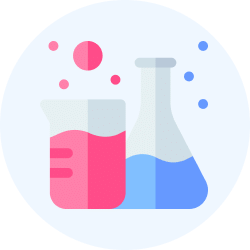Solved Practice Questions on Hofmann, Curtius, wolff, Pinacol & others | Organic Chemistry PDF Download
Q.1. Which type of catalytic reaction, does Dienone phenol rearrangement reaction belong?
(a) Acid catalysed
(b) Base catalysed
(c) Acidic
(d) Neutral
Correct Answer is Option (a)
The first step in the mechanism of this reaction is the protonation of the most basic atom in the molecule, the oxygen of the carbonyl group (as shown in below reaction).
Q.2. The benzylic acid rearrangement reaction of a cyclic diketone leads to _______
(a) Ring expansion
(b) Ring contraction
(c) Ring fusion
(d) Isomers
Correct Answer is Option (b)
The benzylic acid rearrangement reaction of a cyclic diketone leads to ring contraction as shown in below diagram.
Q.3. Which intermediate carbocation is more stable in pinacole -pinacolone rearrangement?
(a) 1°
(b) 2°
(c) 3°
(d) 4°
Correct Answer is Option (c)
3°-carbocation is relatively stable, and has been shown to return to pinacol by reaction in the presence of isotopically labeled water. A 1, 2-methyl shift generates an even more stable carbocation in which the charge is delocalized by heteroatom resonance.
Q.4. Which Intermediate is formed in Wolff’s reaction?
(a) Carbene
(b) Ketene
(c) Carbocation
(d) Carbanion
Correct Answer is Option (b)
Ketene is formed as intermediate in Wolff’s reaction. Formation of Diazonium ion will be followed by reaction in presence of heat which leads to rearrangement of bonds and ketene will be formed.
Q.5. What is the main difference between Hofmann and Curtius rearrangement?
(a) Products are different
(b) Intermediate formed is different
(c) Reactants are different
(d) Isomers
Correct Answer is Option (c)
The Hofmann rearrangement occurs with an amide. The Curtius rearrangement occurs with an acyl azide.
Q.6. Which medium is used in benzylic acid rearrangement reaction?
(a) Neutral
(b) Strong basic
(c) Mild acidic
(d) Strong acidic
Correct Answer is Option (b)
The mechanism of this benzylic acid rearrangement starts with the attack of hydroxide on one of the carbonyl groups.
Q.7. In which medium Favorskii rearrangement occurs?
(a) Acidic
(b) Basic
(c) Neutral
(d) Alkaline
Correct Answer is Option (b)
It is a base catalysed reaction:
Mechanism of Favorskii rearrangement: Here OH- group of NaOH is attaching at the keto-group and the ring will open for the stability of the molecule.
Q.8. Which was the first molecular rearrangement identified as such by early chemists?
(a) Wolff’s rearrangement
(b) Pinacole rearrangement
(c) Favorskii rearrangement
(d) Hofmann rearrangement
Correct Answer is Option (b)
The pinacol rearrangement was the first molecular rearrangement identified as such by early chemists.
Q.9. With accompanying 1, 2-rearrangement in wolff rearrangement, an α-diazocarbonyl compound is converted into a ketene by loss of which of the following compound?
(a) Dioxygen
(b) Dinitrogen
(c) Disulphur
(d) Ammonia
Correct Answer is Option (b)
The leaving group (N2) and the migrating group (R1) are antiperiplanar, which favors a concerted mechanism, in which nitrogen extrusion occurs concurrently with 1, 2-alkyl shift.
Q.10. Which types of isomers are formed in rearrangement reactions?
(a) structural isomers
(b) Geometrical isomers
(c) Optical isomer
(d) Conformational isomers
Correct Answer is Option (a)
Products formed have the same molecular formula, but their atoms have different arrangements or bonds. For example, Butane and isobutane have the same number of carbon (C) atoms and hydrogen (H) atoms, so their molecular formulas are the same.
|
44 videos|102 docs|52 tests
|





















